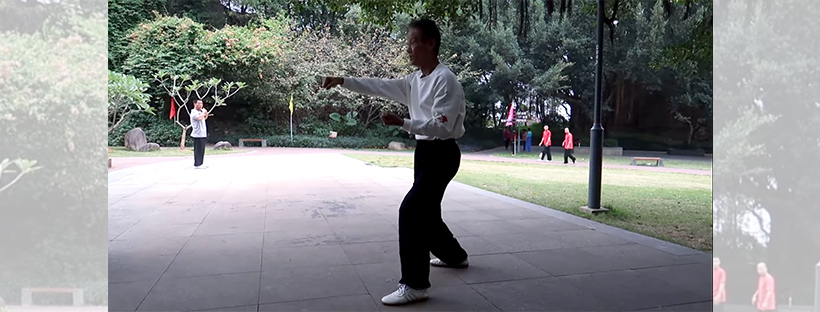Recently, the Karate Nerd™ Jesse Enkamp published a video about Seisan kata (十三) and how he discovered the supposed original version of the kata in China, with a master of the Incense Shop Boxing style (Xiāng Diàn Quán), who would be a direct descendant of the style practiced by the Shaolin monks of Fujian. Exploring the roots of Karate is great and making comparisons between the different kata too, but I believe that a little caution is needed with categorical statements like “this is the older version” or, in this case, even if that would be a version of Seisan .
I have little knowledge of Chinese forms, but Will, from Monkey Steals Peach channel, who partnered with Jesse on the China travel project, seems to agree with my point of view, as he wrote on his channel:
“there are actually quite a few forms in Fujian which contain these signature moves, so I think it’s a bit of a stretch to say it’s THE source, more likely it’s ONE source. In my recent interview with Russ Smith we discussed Sanchin, Seisan and their possible connections to Fujian.”
To hear the interview to which he refers, click here.
An important point: the name of the Chinese form presented is San Zhan (三 战), which the Japanese pronunciation is Sanchin. There are several versions of San Zhan/Sanchin, both in Chinese and Okinawan styles and, most of the time, they are foundation exercises within the system. As much as a parallel can be made with other kata, like Seisan, things need to be presented as they are. If someone asks for the name of the form, the answer is “San Zhan”, not “Seisan”, which even have different meanings. Whether there was influence from one form to another is another story, worthy of serious study. Analogous movements can be found in several forms, as Will wrote.
It must also be said that this form of the Incense Shop Boxing style and even similar versions from other schools are not exactly unknown, as can be seen here and here.
The idea of discoveries is tempting, but it needs to be supported by more robust evidence than a very remote and punctual similarity. This path lessens the possibility of errors and statements made only for the purpose of creating a narrative. A case of “discoveries” that can lead the community to error occurred, for example, with the false photo of Anko Itosu: the image of a man with a mustache today illustrates books, websites and pictures on the wall of many dojo as if he were Itosu, but in truth it is a man named Miyake Sango.
We really need people passionate about Karate to share knowledge, bring little-known information to everyone and help the community at large. And when what is presented can be put on the table for debate, even better. In this sense, the connection of Karate with the Chinese styles is something fascinating and deserves to be treated with due attention and respect.
By the way, I even put the link to the full San Zhan form (from Monkey Steals Peach) in a comment on Jesse’s video on Facebook. The comment has been deleted.
